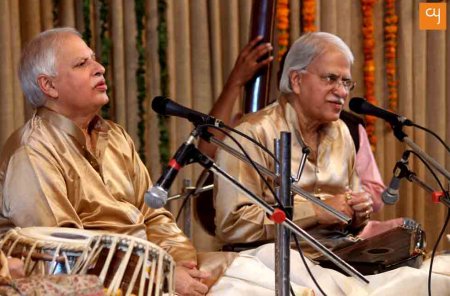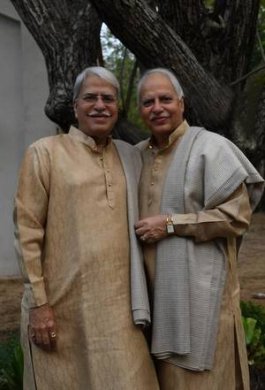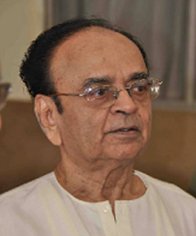 |
  |
 |
  |
Pt Rajan Mishra's exit - a bolt from the blue - Dr S D Desai e-mail: sureshmrudula@gmail.com April 29, 2021 I may be excused this personal reference at the outset. For two full days following the unbelievable news of Pt Rajan Mishra having passed away, with only a nodding acquaintance with classical music I continually kept listening to vocal recitals by Pt Rajan-Sajan Mishra. Such has been the enduring quality of their voice seeking to be one with the Nada Brahma. In an interview, Rajanji once observed, "At a time when our heart centre is drying, it's music that enriches it."  Pt Sajan Mishra, Pt Rajan Mishra Relatives, friends and acquaintances became memories in recent months. The most distressing of the exits, untimely and totally unexpected, that is felt by art lovers all through the country and abroad has been of the legendary vocalist of our time, Pt Rajan Mishra (1951-2021), the elder brother of Pt Sajan Mishra, no less gifted. The revered and distinctively different duo regaled listeners with their melodies for six decades, beginning with promising performances in Banaras, the city of temples and the place of their birth. They were in the prime of their pursuit. The news came as a bolt from the blue. An eminent American theatre person fond of Indian music and dance, observed, "His long sustained notes... were a pathway to heaven." At the annual Saptak Music Festival, Pt Rajan and Sajan Mishra's recital was fondly looked forward to late during the night every year. Knowledgeable music lovers point out, "They never repeated a raga all these forty-one years at the festival." Whether through meditative notes like sonorous drones rising from within or lofty crescendos piercing the sky in celebratory joy, they stirred the imagination in their characteristic Khayal gayaki, their forte. Remaining low key, Viraj Amar recalls her association with the illustrious guru. Pleased with her Shyam Kalyan he listened to from the audience when she was still in the final year of college, Rajanji had casually said, "Aa jaana, aage shikhna ho to." It was after her wedding that she gathered courage to modestly approach him. Through a full-fledged ceremony of Ganda Bandhan in the celebrated Guru-Shishya tradition she was accepted as their shishya to receive their Gharana gayaki with its subtle nuances way back in 1992. She is the most senior disciple of her revered Guru. What made him distinctively different as a guru, Viraj observes, is that he used to make his disciple think and not follow him blindly. He would, for example, like them to think why a vocalist used a particular taan - a rapid improvisational technique - in his singing and not just imitate it. This approach had them deeply think of the format of their jugal gayaki, in which neither of them growing overpowering both became one. She is also quick to stress that to punditji, performance was a western concept which entails showing off a skill. Music to him was a sadhana that aims at an expression of bliss and joy, not disappointment.  Pt Rajan Mishra, Pt Sajan Mishra (photo: KV Srinivasan) Jonathan Hollander demonstrated his appreciation of the Mishra brothers' rendition of raag Durga in Shakti: A Return to the Source he presented a year ago at Natarani as part of the 40th Vikram Sarabhai Inter Art Festival, Ahmedabad. Rajanji's voice rises with power on words like duhkhaharini and paapanivaarini in it and steadies at the top note like a flame, a delectable ascending vocal pattern that has given music lovers a cherished aural experience. The vocal pattern, they would love to recall, used to get a bit dramatic on the higher octave with a restrained abandon. In the firmament of Indian classical music, Pt Rajan Mishra has a fixed permanent place. 
Dr. S.D. Desai, an author and a contributor to dance, drama and literary journals, is a freelance art writer. Post your comments Please provide your name and email id along with your comment. All appropriate comments posted with name and email id in the blog will also be featured in the site. |